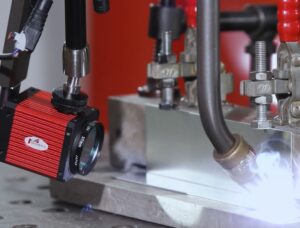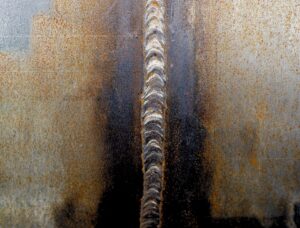Selecting the right welding rods and wires is crucial for achieving strong, defect-free welds. The choice of filler metal directly affects weld strength, appearance, and durability. Whether you’re using MIG welding, TIG welding, or stick welding (SMAW), understanding which filler metal works best for your project can prevent weld defects like slag inclusion, porosity, and cracking. A proper weld inspection process, combined with modern welding cameras and weld monitoring systems, ensures that the selected filler metal produces high-quality results. In this guide, we’ll explore different types of welding rods and wires, their applications, and tips for choosing the right one for your specific welding process.
Understanding Welding Rods and Wires
Filler metals are categorized into two main types: welding rods (used in processes like SMAW and TIG welding) and welding wires (used in MIG welding, flux-cored welding, and submerged arc welding).
Welding Rods (Electrodes)
Used in Shielded Metal Arc Welding (SMAW) and Gas Tungsten Arc Welding (TIG), welding rods come in two main categories:
- Consumable Electrodes: Melt and become part of the weld (e.g., stick welding electrodes like E6010, E7018).
- Non-Consumable Electrodes: Used only to create an arc (e.g., tungsten electrodes in TIG welding).
Welding Wires
Used in MIG welding, MAG welding, and flux-cored arc welding, welding wires are fed continuously into the weld pool. They come in different types:
- Solid Wire: Requires a shielding gas (e.g., ER70S-6 for MIG welding).
- Flux-Cored Wire: Contains flux inside for shielding (e.g., E71T-1 for outdoor welding).
A welding camera can help monitor the weld in real time, ensuring proper fusion and penetration when using different filler metals.
Common Welding Rods and Their Applications
Different SMAW electrodes serve specific purposes:
- E6010: Deep penetration, good for root passes in pipeline welding.
- E6013: Ideal for light-duty welding, easy slag removal.
- E7018: High-strength welds with low hydrogen content, excellent for structural welding.
How to Choose the Right Stick Welding Rod
- Match the electrode to the base metal composition.
- Consider the welding position (e.g., E7018 works well in all positions).
- Check for welding defects like slag inclusion using a weld monitoring system.
Common Welding Wires and Their Applications
Different MIG and flux-cored welding wires are used based on the project:
- ER70S-6 (Solid Wire): Ideal for MIG welding mild steel with gas shielding.
- E71T-1 (Flux-Cored Wire): Works well in outdoor conditions with high deposition rates.
- ER4043 (Aluminum Wire): Used for MIG welding aluminum, reducing cracking risks.
How to Choose the Right MIG Welding Wire
- Match the wire with the base metal and shielding gas.
- Consider whether a welding inspection technique like welding visual inspection or x-ray testing is needed.
- Monitor weld penetration and fusion using a welding camera.
Welding Defects Caused by Incorrect Filler Metal Selection
Using the wrong welding rod or wire can lead to serious weld problems, including:
1. Slag Inclusion
Cause: Using improper flux-coated electrodes or not cleaning slag between passes.
Solution:
- Use the correct SMAW electrode for the job.
- Implement welding inspection techniques to detect slag before finalizing the weld.
2. Lack of Fusion
Cause: Low heat input or incorrect filler metal selection.
Solution:
- Use a weld monitoring system to ensure proper fusion.
- Adjust amperage or use a different MIG/MAG welding wire.
3. Porosity in Welds
Cause: Contaminants in filler metal or improper shielding gas use.
Solution:
- Store electrodes and wires properly to avoid moisture absorption.
- Use welding cameras for real-time monitoring to detect defects early.
Best Practices for Using Welding Rods and Wires
To ensure welding quality, follow these expert tips:
- Choose the Right Diameter: Thicker materials require larger diameter electrodes or wires for better penetration.
- Store Welding Rods Properly: Keep low-hydrogen electrodes (like E7018) in a dry environment to prevent hydrogen embrittlement.
- Use a Welding Camera for Precision: A weld monitoring camera can capture arc welding images, helping to assess bead quality and penetration depth.
Conclusion: Perfecting Your Welding Skills with Technology
Choosing the right welding rods and wires is key to producing high-quality, defect-free welds. By understanding the properties of different filler metals and using welding inspection techniques, you can prevent weld defects and enhance overall welding performance.
Enhance your welding process with Mecaweld’s weld monitoring cameras. Ensure precision, detect weld problems early, and improve welding quality with real-time monitoring. Contact us today!



